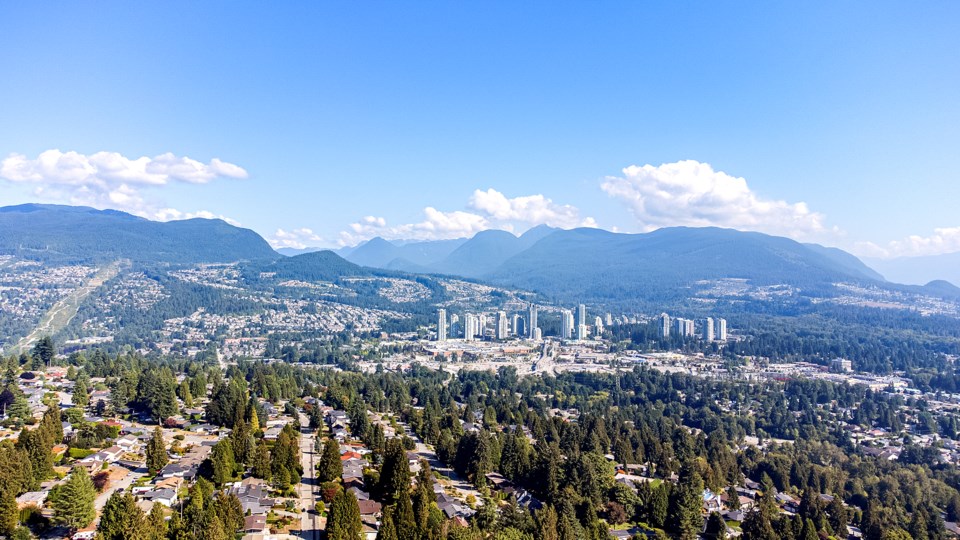Across Canada, the . The unprecedented demand for rentals is a result of several factors, including , , and .
In the middle of 2023, Canada’s population eclipsed 40 million people. Currently, the World Bank estimates the population to be — with expectations to reach 44.8 million people by 2040.
The biggest driver of such population growth has been described as or, more simply, immigration. As a result, the demand for housing — specifically rental housing among new 91原创s — has increased and is expected to continue to grow.
Housing affordability crisis continues
For many 91原创s, homeownership remains out of reach. A found that 68 per cent of 91原创 households are unable to buy a home due to inflation and wage stagnation.
Together, inflation and wage stagnation have created demand for rental housing. Nobel Prize-winning economist Milton Friedman once described .” Wage stagnation is the phenomenon that occurs when wages lag behind inflation as a result of the two not moving in lockstep.
My recent research shows that indeed, , making the proverbial dream of homeownership unlikely — or at the very least delayed significantly.
Not surprisingly, over the last five years, homeownership rates in Canada have fallen from 68.5 per cent to 66.2 per cent and .
This downward trend underscores the growing reliance on rental housing as an alternative — but the current rental market is ill-equipped to handle the demand.
Aging rental stock
The answer to Canada’s housing crisis isn’t as simple as building new rental units. As , almost half of Canada’s rental properties (1,026,020 units) were built between 1960 and 1979.
Put differently, over 80 per cent of the rental properties in Canada were constructed before the year 2000. These older units remain the backbone of the rental market, but many need to be modernized to remain viable.
While policymakers and the real estate industry have traditionally focused on the construction of new properties, equal attention should be paid to maintaining and preserving older ones as to building new ones.
The dual challenge of constructing new rental properties and preserving existing ones requires the real estate industry and governments to adopt a dual focus on both new developments and upgrading existing rental properties.
Industry’s role in addressing the crisis
To effectively plan and manage the existing and forthcoming challenges in the rental market, both the private sector and governments need to focus on making investments for the long-term.
Playing the long game will . In real estate, this includes consciously and deliberately committing to innovation, such as retrofits and energy efficiency upgrades. Doing so requires the shift of thinking from fiscal years to decades.
For rental property operators, this process starts with investing in existing properties. Financialized operators — those that have sophisticated management, utilize multiple sources of capital and operate in a variety of geographies — are perhaps the best positioned to do this. They have the financial means and scale of ownership to upgrade and modernize existing rentals, ensuring they can meet the rental demands of today and tomorrow.
Financialization is a natural progression . In the context of real estate, financialized operators are large, sophisticated and often securitized, meaning assets are pooled together and turned into financial products for investors.
Beyond their financial and operational abilities, financialized operators have a broader responsibility to a diverse group of stakeholders beyond shareholders. New research has shown that that emphasize other stakeholders such as renters and society at large.
Of course, it’s also important for the industry to invest in new property construction to help combat the intensifying demand for rentals. However, adding to the rental universe is complex, bureaucratic and often doesn’t address affordable housing solutions.
The cost-push inflation — when input costs increase the price of final goods — of materials makes new builds more appealing than affordable housing. Cost-push inflation results in higher prices. Nevertheless, when it comes to rentals.
Government-industry collaboration
The to purchase existing apartment buildings to protect and maintain affordable rental units is an important step in the right direction, but it isn’t enough.
Collaboration between governments and the real estate industry is needed to make a deeper impact. While the importance of preserving existing rental properties is well understood, to date .
To make a significant impact, more programming and incentives need to be established for operators — particularly those that are financialized and well-equipped to create large-scale change.
The private and public participants need to collaborate to enact and engage in initiatives that reduce costs and prioritize affordable rental housing and the preservation of existing rental stock for Canada’s long-term interests and sustainability.
Grant Alexander Wilson has consulted for, and received funding from, Avenue Living Asset Management.



